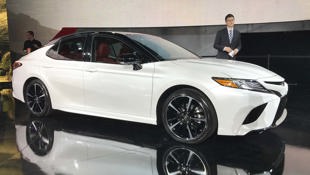Like all automakers, Toyota wants to continue to improve both the performance and fuel economy of its engines, but plans to do so without following the industry trend toward small-displacement turbocharged engines.
That's what Ben Schlimme, powertrain manager for Toyota North America, said in a presentation to automotive industry heavyweights at the Centre for Automotive Research.
Instead, Toyota's plan is to expand the Dynamic Force engine strategy introduced in the 2018 Camry and CH-R 2.5L and 2.0L four-cylinder engines across its model range.
Dynamic Force is the catchphrase-y term Toyota will attach to future engines that adopt the Camry four-banger's improvements in friction reduction, intake and exhaust flow and cooling.
Toyota says the 2.5L, which makes as much as 206 hp and 186 lb-ft of torque, achieves 40 percent thermal efficiency, which it says is among the highest of any mass production engine available today.
Some of the engine's tricks include changing the angle of the intake valves, and their angle relative to the exhaust valves, which swirls the air/fuel mixture as it enters the engine, which works with a higher compression ratio (13:1, up from 10.4:1 in the outgoing Camry's four-cylinder) to promote more efficient combustion and improves both power output and fuel economy. Among other new engineering features is a motor-driven water pump and a continuous variable capacity oil pump.
Toyota says Dynamic Force will eventually be used in the brand's cars, trucks and SUVs, though V6 and V8 engines fitted with the technology are still in concept form only.

